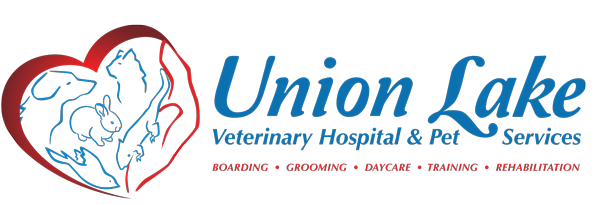We all want our pets to feel their best so they can get the most out of life. Certain conditions, like hip dysplasia, can decrease quality of life and make it hard for them to do the activities they love most. With the help of your friends at Union Lake Veterinary Hospital, you can help your pets find more comfort when dealing with hip dysplasia.
What is Hip Dysplasia?
The hip joint is made up of a complex system that helps engineer movement in the legs. In healthy pets, the ball joint of the hip fits neatly into the socket. Sometimes, though, the ball (or the head of the femur bone) and the socket in the pelvis do not grow at the same rate. This means they will not match up perfectly. Because of the uneven growth, animals that have hip dysplasia will have looseness of the joint. This will eventually turn into degenerative joint disease (DJD) or osteoarthritis. While hip dysplasia is seen in cats, it is much more common in dogs. It can negatively impact an animal’s ability to move, jump, and enjoy life like they once did.
Causes of Hip Dysplasia
While this is a genetic condition, there are certain lifestyle factors that could affect it. Diet, exercise, rate of growth, overall size, and amount of muscle mass can all impact a young animal’s chances of developing the condition. Obesity and orthopedic conditions can also increase an animal’s risk for developing hip dysplasia. Certain breeds are more prone to developing the condition. Talk to your vet about your pet’s risk and what you can do to lower the odds that he or she suffers from it in the future.
Symptoms of Hip Dysplasia in Pets
Spotting hip dysplasia early can help you find relief for your pet. Some of the most common symptoms include:
-
- Limping
- Pain or weakness in the hind legs
- Difficulty climbing up or down stairs
- Trouble getting up from a lying or a sitting position
- Avoiding physical activity
- Difficulty using the litter box (for cats)
Hip dysplasia develops in young animals, but the symptoms might not present until later in life. Some animals start showing signs of it at around 1-2 years of age. Others won’t have outward problems until their senior years. Spotting the symptoms of hip dysplasia early (no matter when it develops) will give your pet the best chance at management.
Treatment for Hip Dysplasia
There are a variety of treatment options that can help with hip dysplasia. Depending on your pet’s specific condition, the veterinarian will choose the treatment option or options that should provide the most relief. These can include:
-
- Non-steroidal anti-inflammatory drugs (NSAIDS)
- Joint supplements
- Nutritional supplements
- Chondroprotective injections
- Moderate exercise
- Physiotherapy
- Hydrotherapy
- Acupuncture
- Referral to a board certified surgeon for surgical correction options
- Other alternative treatments
If you suspect that your pet has hip dysplasia, the expert team at Union Lake Veterinary Hospital can help. Our top notch veterinary care and pet rehabilitation facility are here to ensure your pets get the best care no matter their condition. To learn more about our services or to schedule a visit, please call (248) 363-1508.

